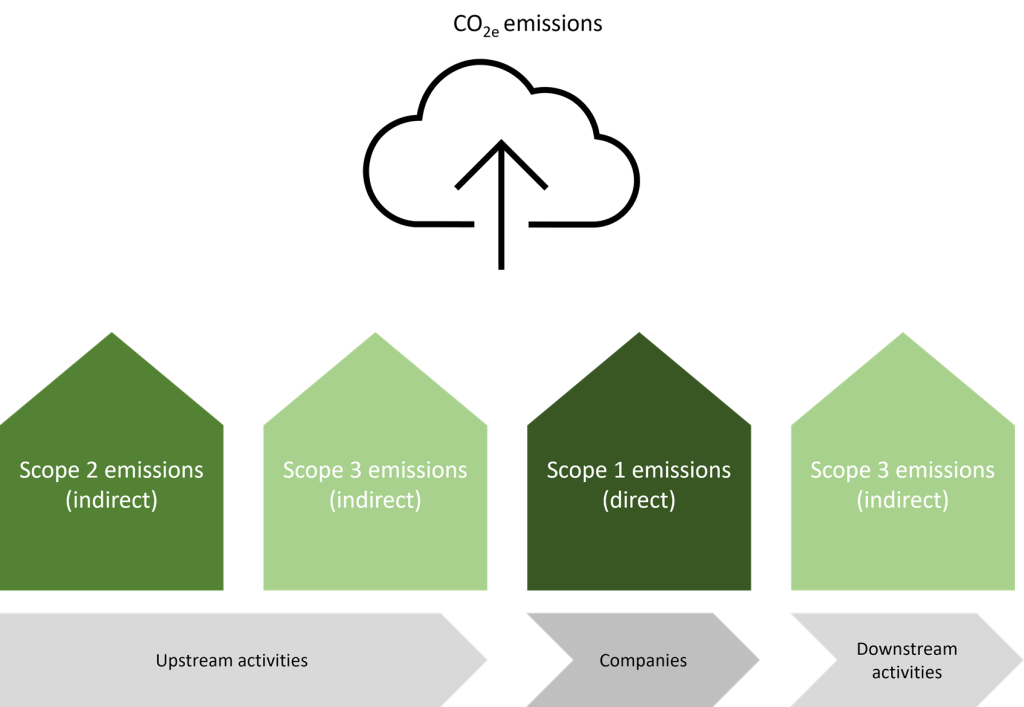News
16. March 2023
Reading Time: 3
Min.
news
Corporate Carbon Footprint
By calculating the corporate carbon footprint (CCF), the amount of relevant greenhouse gas emissions that occur along a company’s value chain can be determined.
Greenhouse gases are gases that affect the climate and contribute to the greenhouse effect. Man-made greenhouse gas emissions are the main cause of climate change. Greenhouse gases include carbon dioxide (CO2), methane (CH4) and nitrous oxide (N2O). Furthermore, there are fluorinated greenhouse gases, also known as F-gases. Due to the different characteristics, such as the time they remain in the atmosphere, greenhouse gases have different climate impacts. In order to make the climate impacts comparable, the concept of greenhouse gas potentials is used, which helps to convert the different greenhouse gases into carbon dioxide equivalents, usually in tons.
CO2 emissions sources
CO2 emissions can be categorized into three emission sources: Scope 1, Scope 2 and Scope 3. As part of the mandatory sustainability reporting according to CSRD, companies must calculate their Scope 1, 2 and 3 emissions and set corresponding reduction targets.
Scope 1
are all greenhouse gas emissions caused directly by the company. Meaning, from sources owned or controlled by the company. This includes, for example, greenhouse gas emissions from combustion in boilers, kilns, vehicles, etc. as well as from chemical production in process plants. Furthermore, emissions released during transport with the company’s own vehicles (e.g. transport of materials, products and waste as well as passenger transport) are included.
Scope 2
emissions consist of indirect emissions that arise from the purchase of energy. These include the greenhouse gas emissions from the generation of purchased electricity consumed by the company. Although the electricity is consumed by the company, the emissions physically occur at the facility where the electricity is generated, thus before it is consumed.
Scope 3
Scope 3 includes emissions indirectly caused by company activities along the value chain. This includes, among others, raw materials and materials purchased as well as emissions from transport with vehicles not owned by the company (transport of goods or business trips). Furthermore, the emissions that occur in the life cycle of a product up to the end-of-life procedure can be included under Scope 3. It is advisable for the company to identify which Scope 3 activities are likely to cause the greatest GHG emissions, offer the greatest opportunities to reduce GHG emissions and are relevant to the company’s business objectives.

We provide support and guidance in the overall process regarding the Corporate Carbon Footprint:
- Support in the development of a decarbonization strategy
- Support with data collection and recording
- Calculation of your company’s CO2 emissions (Corporate Carbon Footprint)
- Support in the identification of reduction potentials and target setting
- Support in the implementation of the defined goals
- Support with regard to Scope 3 calculation – the most challenging issue – is constantly being expanded








